8 Amazing Examples of Visual Content Marketing by Big Brands
ADRIENNE WOLTER | 31 MAR 2016
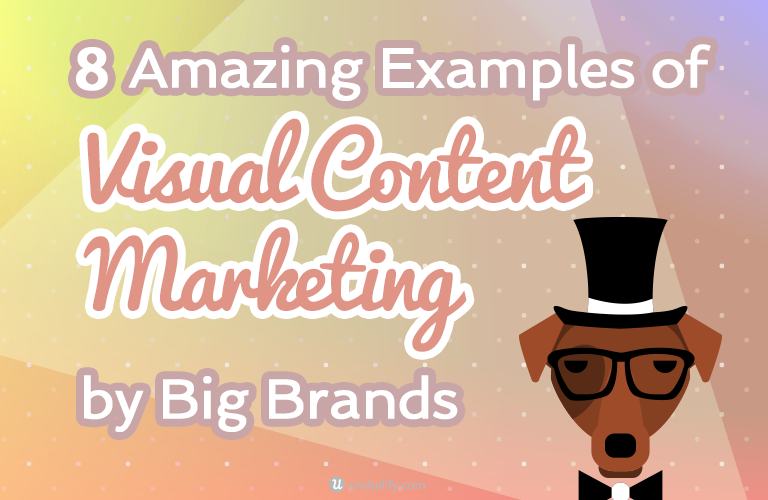
They say content is king, but if it were up to me, I would expand on that: incredible content is king.
With all the noise on the internet, it takes an awful lot of effort to stand out and using amazing visual content is way to truly stand out.
Even given that, it takes a certain kind of visual content to succeed on certain platforms. What thrives on Tumblr won’t necessarily succeed on Facebook, and what Pinterest users love won’t necessarily excite LinkedIn users.
It seems like some brands have absolutely mastered the art of content marketing on particular platforms. They’ve figured out the unique features of the platform they can use to their advantage, or they’ve stumbled upon a unique and brilliant strategy that really makes their marketing shine.
Even if you are working in an entirely different niche or industry, you can still learn a lot from the types of content that these brands post and how they engage their audience.
Whether you are interested in making a splash on Facebook, Pinterest, Instagram, or other platforms with visual content marketing, here are some brands that are really doing an incredible job engaging and exciting their audience.
1. Infographics & Visual Guides: Neil Patel
Between the blogs for his companies Kissmetrics, Crazy Egg, and Quick Sprout, Neil Patel has created some of the most authoritative guides on the web about internet marketing, blogging, and web design.
The most-shared Kissmetrics post from the past year, How to Build an SEO-Optimized Web Page, included an infographic that very simply breaks down some of the most important and impactful parts of the search engine optimization process:

(view the full infographic on Kissmetrics)
There is a reason that this piece of content earned over 13,000 tweets: it takes an incredibly complex topic – perfectly optimizing a page for search engines – and simply and succinctly summarizes the most important things to do with short phrases, icons, and illustrations. This is the exact kind of content that people in this niche are looking for: resources to help them learn more about complex SEO topics and then go apply what they’ve learned.
If you want to succeed at visually content marketing using infographics, consider what your audience would find useful. What complex topics can you break down for them that they are likely to share as a useful resource?
2. Facebook Content Marketing: Tasty by Buzzfeed
Unless you have been living under a rock or you have a set of Facebook friends who never share anything, you have probably seen Tasty’s addictive content. Tasty posts irresistible videos that show exactly how to cook surprisingly simple but delicious and visually-appealing snacks and appetizers.
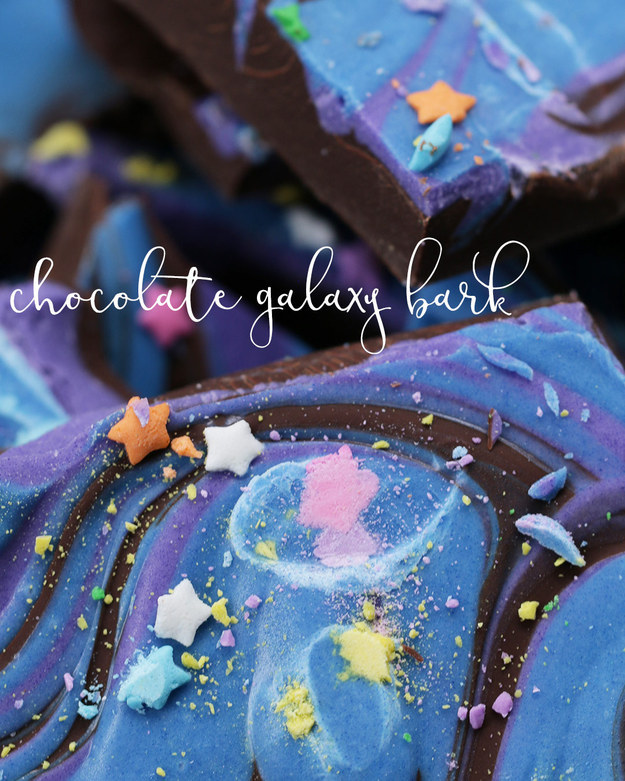
Most of the videos are shot attractively top-down, and you never really see the people making the food – just their hands as they put it together. Tasty uses camera tricks like zoon and stop motion to keep the video moving quickly and maintain visual interest. Most of their videos are between 30 seconds and a minute in length, so it’s easy to say “I’ll stop soon… just one more Tasty video…”
It’s obvious that videos are killing it for Tasty, but it may not be obvious why. The reason is because Facebook autoplays video (muted) for many users, at least those on wifi, and their videos combine incredible looking results (I mean, just look at that chocolate bark) with a zippy set of demonstrated instructions that it’s hard to look away from.
In addition, Tasty knows where their audience also frequents. Every video they post on Facebook is accompanied by a link to the Buzzfeed article with the recipe, and a pin their fans can save to their recipe board. Because these links are useful, they are almost always voted to the top of the comments with likes. This gets people clicking over to the site and builds their audience on Pinterest in addition to Facebook.
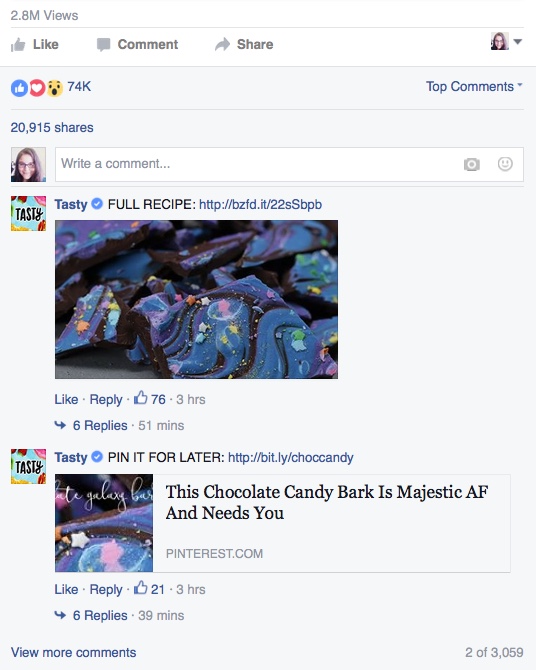
3. Pinterest Content Marketing: Levo
Levo is a networking tool for job seekers and working millennials, and they have an incredible Pinterest presence. Over 50 boards run the gamut of work and play, and they have even cultivated some group boards that get their fans pinning for them.
They have a few standard image formats across their Pinterest account for sharing their own content. First of all, almost all images are oriented to be taller rather than wider, which is generally a great practice for posting on Pinterest. In addition, they have a few standard image formats that they tend to use:
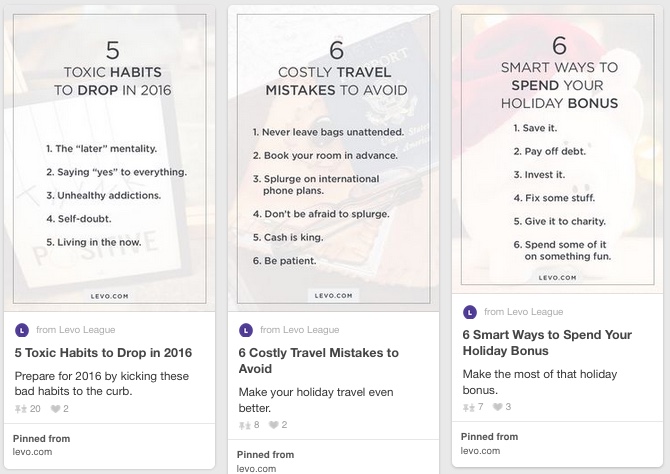
These types of images give them a unique feel that gives their followers some idea of what to look for while browsing Pinterest (“Oh, this looks like Levo, it must be good quality”) and at least the second set of pins stands out from the Pinterest interface without clashing.
If you’re trying to succeed on Pinterest, definitely create Pinterest-ready images that are taller than they are wide. Try out different templates to see what drives repins with your audience.
4. Tumblr Content Marketing: Hulu
If there are two things Tumblr is known for, it would be crazy fans and animated gifs.
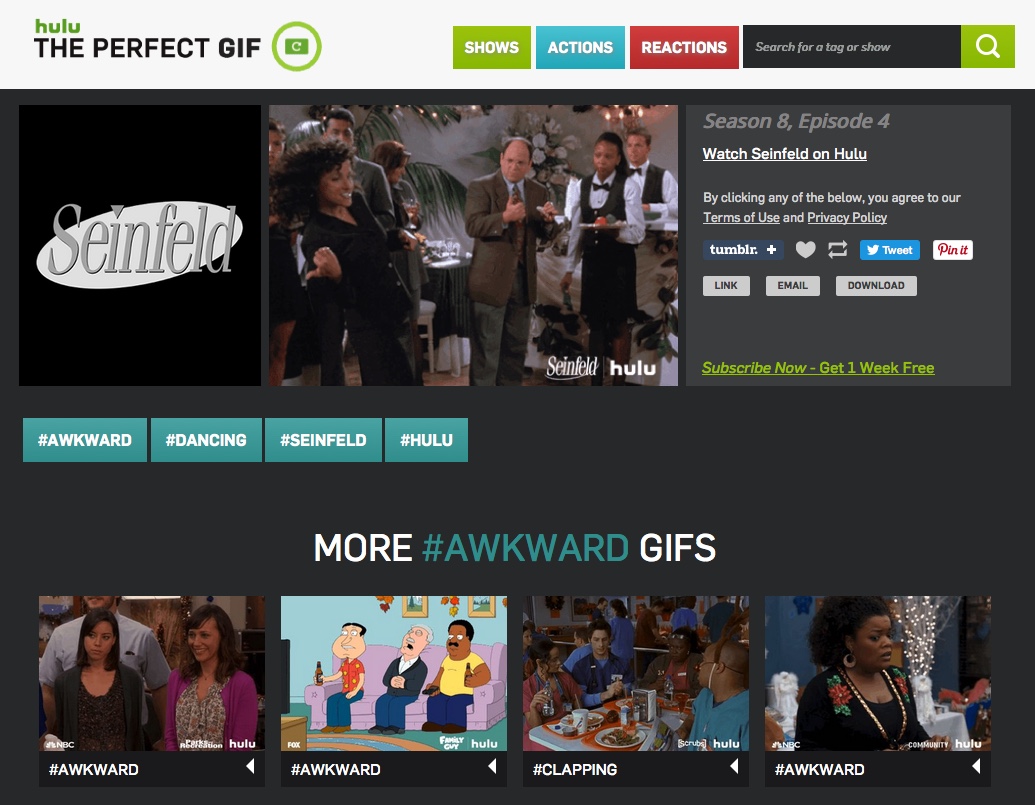
Hulu brought the best of both worlds together when it created The Perfect Gif. The site was custom built on Tumblr, and features high-quality animated gifs from Hulu’s extensive TV show catalog. Their priority was to make it easy to use, so fans could more easily express themselves on Tumblr and elsewhere with, well, the perfect gif.
Hulu has successfully built a feasible alternative to Giphy, on a platform where it will be heavily used.
Even if you can’t bring a TV show catalog to Tumblr in the form of animated gifs, you can connect with your audience on Tumblr by getting your gif game on.
5. LinkedIn Content Marketing: Inc. Magazine
If there was ever a brand made to succeed on LinkedIn, it was Inc. Magazine. Their content is geared towards the business/leadership/productivity/self-development audience, which also tends to be the strongly motivated audience that actively uses LinkedIn.
They post content from their blog every few hours, very quickly garnering a huge number of likes and usually a few comments.
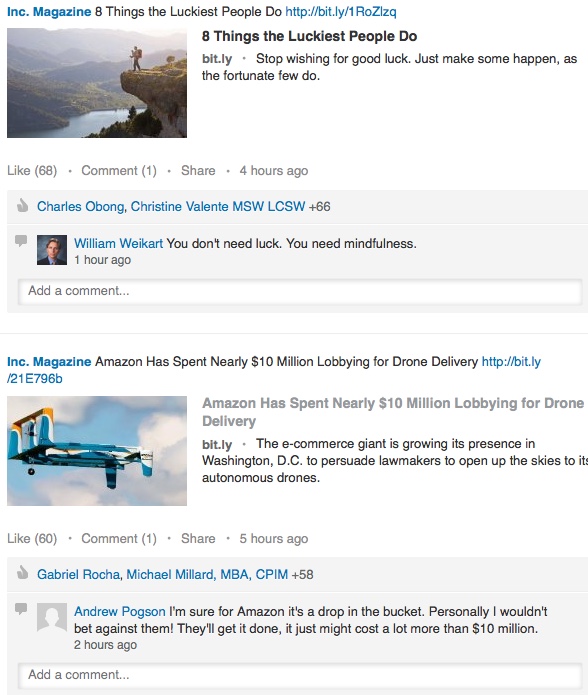
The content they share always has an attractive image. Make sure that the content on your own site is set up with Open Graph meta tags, so that anyone who chooses to share it to LinkedIn (and many other networks) automatically gets an image.
6. Vine Content Marketing: Lowe’s
Lowe’s has really found a place where they can shine on Vine. Their videos on the short, looping video network are cute and generally stop motion or claymation, so they really stand out on users’ feeds. They regularly use the space to share mini lifehacks and how to videos.
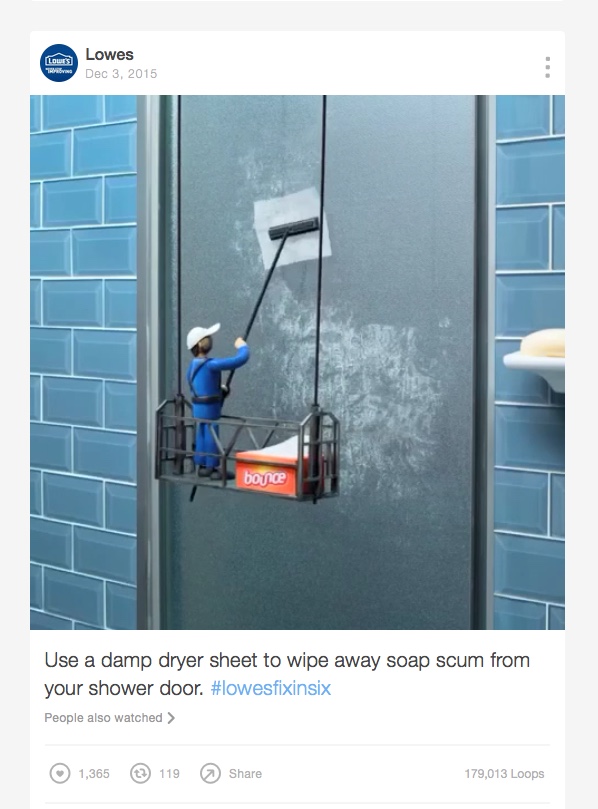
This style has worked very well for them because the moment their followers see the classic stop motion style videos, they know it’s going to be something useful. How can you create a unique style that is instantly recognizable to your audience?
7. YouTube Content Marketing: GoPro
As a camera company, GoPro was made to succeed on YouTube. Their channel is full of daredevil stunts, animal encounters, and other adventures, all shot with GoPros.
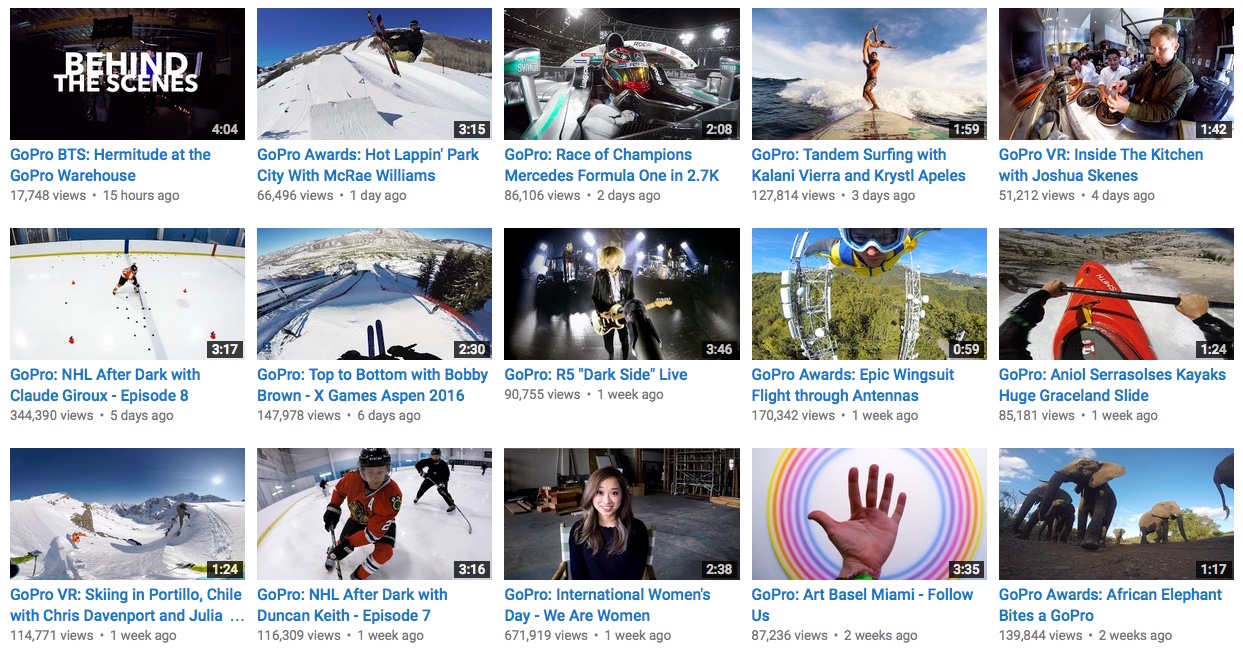
Part of their success is due to active involvement from their community. GoPro users regularly submit their content shot with the products. This gives them a vast library of content to share, including some that shows off the indestructibility of the cameras – as shown in that bottom right video!
To build up your content marketing on YouTube, think about ways you can get your audience involved. User-generated content is a great tool for building an engaged audience!
8. Instagram Content Marketing: Warby Parker
Warby Parker is a company that makes eyewear, and I have long admired their product photography. Their colorful feed stands out against the white and blue Instagram interface.



With these shots, Warby Parker is building up a world that isn’t entirely about their products – it’s about a lifestyle. They also embrace seasonal themes like spring blooms and recent trends like succulents.
On Instagram, how can you use your content marketing to create a lifestyle for your audience?
Wrapping Up
Whether you are building up your content marketing on Pinterest or Instagram or LinkedIn, it is important to identify the features that really make your content stand out on that platform. Here is a summary:
- Infographics/Guides: Simplify complex topics
- Facebook: Autoplay videos
- Pinterest: Tall, skinny images that follow a clean format
- Tumblr: Animated gifs
- LinkedIn: Open graph metas set up
- Vine: Unique style
- YouTube: User-generated content & audience involvement
- Instagram: Create a lifestyle
These are great shortcuts to success, but you will also need to blaze your own trails. You can’t just copy what Tasty, GoPro, or Warby Parker are doing – they’re already doing it! Instead, find something that no one else is doing yet and do it, or find something that no one is doing well and be the best at it.
What other brands are doing great things on social networks? Share your favorites in the comments!

